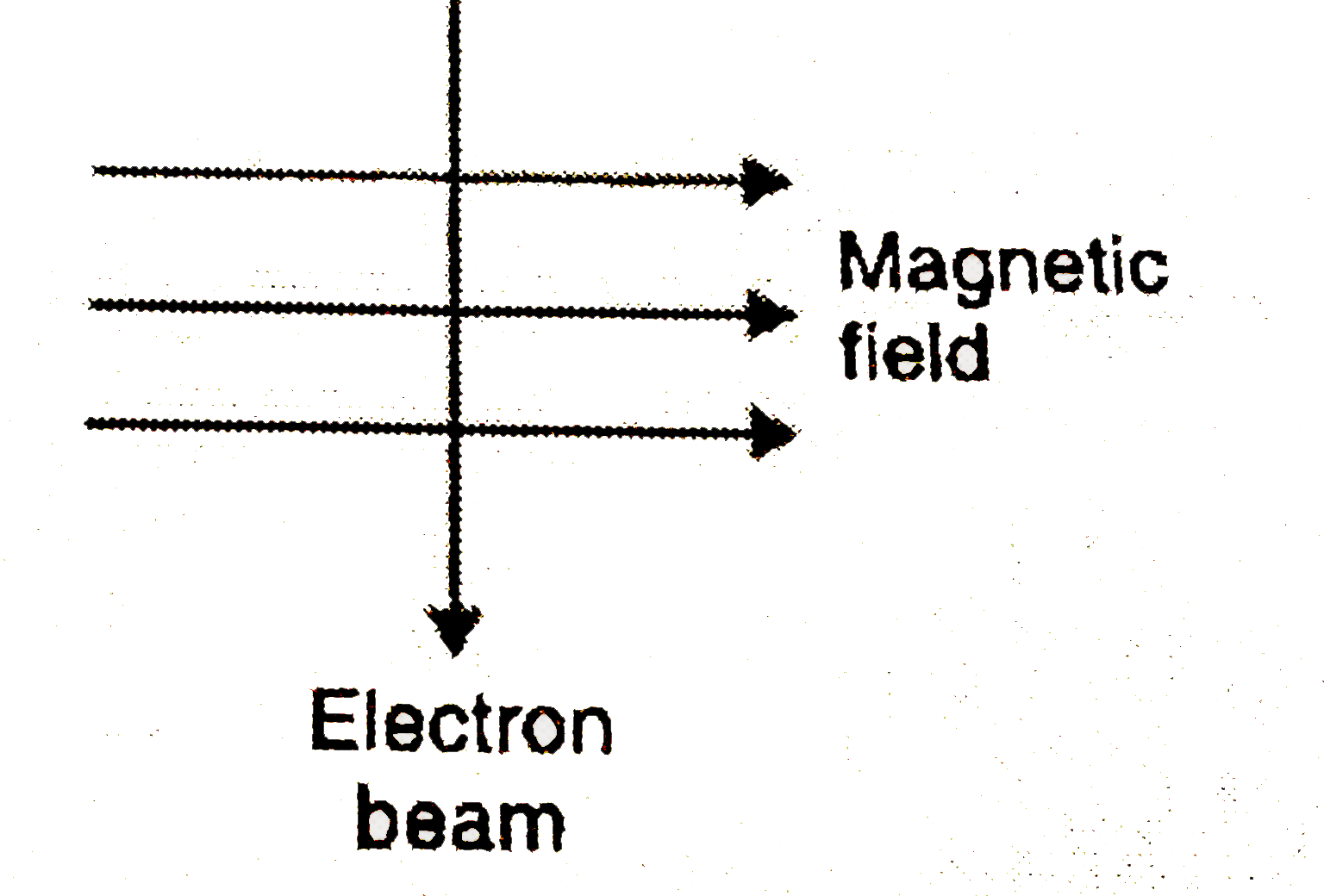A narrow beam of electrons passes immediately over the surface of a metallic mirror with a diffraction grating with period d=2.0μm inscribed on it. The electrons move with velocity v, comparable to c, at right angles to the lines of the grating. The trajectory of the electrons can be seen in the from of a strip, whose colouring depends on the observation angle θ (Fig.) Interpret this phenomenon. Find the wavelength of the radiations observed at an angle θ=45∘.

An electron moving in front of a metal mirror sees an image change of equal and opposite type. The two together constitute a dipole. Let us look at the problem in the rest frame of the electon. In this frame the grating period is Lorenz contracted to
d'=d√1−v2/c2
Because the metal has etchings the dipole moment of electron-image pair is periodically disturbed with a period d'v
The corresponding frequency is vd' which is also the proper frequency of radiation emitted. Due to Doppler effect the frequency observed at an angle θ is
v=v'√1−(v/c)21−vccosθv/d1−vccosθ
The corresponding wave length is λ=cv=d(cv−cosθ)
putting c≈v,θ=45∘,d=2μm we get
λ=0.586μm
Topper's Solved these Questions
- OPTICSBOOK - IE IRODOV, LA SENA & SS KROTOVCHAPTER - OPTICSEXERCISE - Thermal Equation
47 Videos
- OPTICSBOOK - IE IRODOV, LA SENA & SS KROTOVCHAPTER - OPTICSEXERCISE - Exercise
2 Videos
- OPTICSBOOK - IE IRODOV, LA SENA & SS KROTOVCHAPTER - OPTICSEXERCISE - Dispersion And Absorption Of Light
24 Videos
- MECHANICSBOOK - IE IRODOV, LA SENA & SS KROTOVCHAPTER - MECHANICSEXERCISE - Mechanics Problems
92 Videos
- OSCILLATIONS AND WAVESBOOK - IE IRODOV, LA SENA & SS KROTOVCHAPTER - OSCILLATIONS AND WAVESEXERCISE - Electromagnetic Waves, Radiation
36 Videos
Similar Questions
Find the wavelength of monochromatic light falling normally on a diffraction grating with period d=2.2μm if the angle between the directions to the Fraunhofer maxima of the first and the second order is equal to Δθ=15∘.
View SolutionA diifraction grating has 5000 lines per cm. What is the grating element ?
View Solution
Knowledge Check
Diffraction of the electron beam is an evidence of the fact that
AElectrons repel each otherBLight has wave propertiesCElectron has wave propertyDElectron has momentumAn electron beam enters a magnetic field right angles to it as shown in the Figure.

The direction of force acting on the electron beam will be :Ato the leftBto the rightCinto the pageDout of the pageTwo streams of electrons are moving parallel to each other in the same direction. They
Aa net repulsion between themBa net attraction between themCthe electric repulsion and magnetic attraction nullify each otherDthe electric repulsion and magnetic repulsion nullify each other
Light with wavelength λ falls on a diffracting grating at right angles. Find the angular dispersion of the grating as a function of diffraction angle θ.
View SolutionA plane light wave with wavelength λ=0.50μm falls normally on the face of a glass wedge with an angle Θ=30∘. On the opposite face of the wedge a transparent diffraction grating with period, d=2.00μm is inscibed, whose lines are parallel to the wedge's edge. Find the angles that the direction of incident light froms with the directions to the principle Fraunhofer maxima of the zero and the first order. waht is the highest order of the spectrum? At what angle to the direction of incident light of the observed?
View SolutionThe velocity of electrons given out by a photosensitive surface depends on
View SolutionA beam of electron is moving with constant velocity in a region having electric and magnetic fields of strength 20Vm−1 and 0.5T at right angles to the direction of motion of the electrons. What is the velocity of the electrons?
View SolutionAn electron moving at the speed of 107 m/s , enters a magnetic field of induction 0.1 T at right angle to the velocity of electron . The radius of circular path followed by the electron is
View Solution
